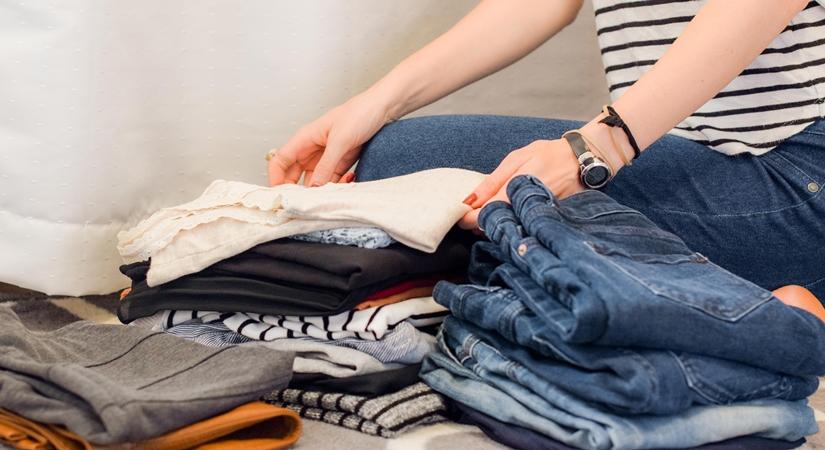Cover Story
Cutting down your fashion carbon footprint

If we choose to shop sustainably we're making huge changes to our ecosystem
ByN. Lothungbeni Humtsoe
April 30, 2020 (IANSlife) One thing we can all agree on is our love for shopping; there's no feeling like adding the latest fashion items to our closet be it apparel, shoes, bags, accessories and the like. But more important then trends, being conscious about the environment is critical in today's.
Indranath Sengupta, CEO and Founder of Kompanero and Sanchit Baweja, Co-Founder of Stage 3 share six ways to cut down the fashion industry’s carbon footprint:
Reorganise your closet
The process of creating a sustainable closet doesn’t start with throwing away things. Streamline your closet by splitting your outfits into four piles: clothing you love wear, clothing you wear occasionally, clothing you’d like more if it fit better, and clothing you’re sure of not wearing again. After creating the piles, keep the first three in your closet and donate the other one in charity.
Restyle your closet
Try to invest money in items where you’re sure to utilise them multiple times. Experiment by styling the product differently for ‘OOTD’. You can try either ‘layer’ in case of repeating an outfit or ‘mix & match’ in case of accessories like bags, jewellery, etc.
Choose brands that work towards sustainable fashion
As Vivienne Westwood said, “Buy Less, Choose well, and Make it last”. Research to find brands which are part of the fashion sustainability cause and working towards saving the environment. Even a small commitment like using organic cotton and other textiles or eco-friendly packing goes a long way in saving the environment. Purchase ‘needed’ items from brands that deserve your hard-earned money.
Rent outfits you will wear only a few times
India is embracing a sharing economy across sectors with the emergence of platforms like Uber, Netflix and AirBnB. New age consumers are turning to shared services as a smart and convenient way to focus more on experiences. Collaborative consumption has enabled people to differentiate between what they want and what they can afford. With the power of technology and the Internet, we’re creating a sharing economy for fashion consumption. It enables people to experiment with fashion without having to worry about the commitments to a piece.
Why keep an abundance of clothing that we know we're never going to repeat. With a rise in the sharing economy, more want experience over ownership. Social media is a big driver of this change in consumer behaviour, where we are constantly sharing and exploring new trends and experiences. Re-using outfits especially occasion-wear gives people the opportunity to try different styles of fashion without the need to buy.
Invest in wardrobe essentials that you can wear & re-wear
If we choose to shop sustainably we're making huge changes to our ecosystem. One way to do it is to only buy staple clothing or have a capsule wardrobe. The effortlessness that styling your basics exudes is chic and saves a huge amount of money. Start with building essentials that you can style in various ways, for example, a simple white shirt can be layered under a slip dress or worn over a pair of jeans. Your style will speak for you.
Eco Friendly Clothing
There are so many sustainable brands out there which follow slow fashion, and many more are emerging with a change in how fashion is produced. Sustainable clothes are made of reused or recycled material and are durable, lasting many seasons. If you're looking to invest in a piece, going eco-friendly is the best way to go.
(This article is a website exclusive and cannot be reproduced without the permission of IANSlife)
N. Lothungbeni Humtsoe can be contacted at lothungbeni.h@ians.in


